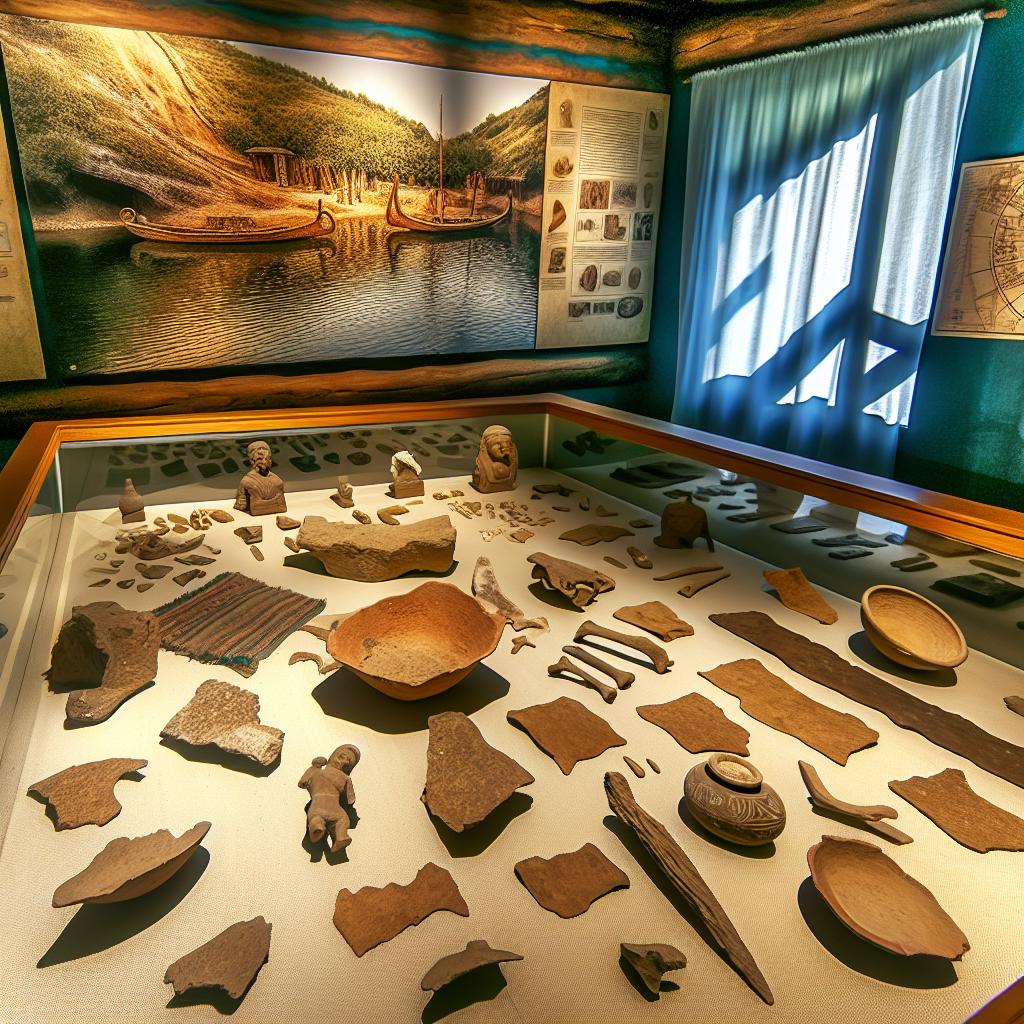Introduction
Ancient artifacts recovered from lake beds offer invaluable insights into past societies, their cultures, and the environments in which they lived. The continuous discovery of such artifacts challenges historians and archaeologists to reinterpret historical narratives and influence our understanding of human development. These submerged relics form a bridge to bygone eras, serving as silent witnesses to humanity’s historical evolution.
Historical Significance
Artifacts extracted from lake beds often represent the remnants of submerged or near-shore sites that were utilized by ancient civilizations. Over centuries, these items become well-preserved in the unique anaerobic conditions found in underwater environments. This preservation state allows researchers to analyze items with a level of detail that is often not possible with artifacts recovered from land-based sites. The variety of objects discovered, ranging from everyday items to sacred offerings, paints a rich tapestry of historical life.
Submergence and Preservation
Lake beds can submerge artifacts through various processes, including rising water levels, geological changes, or human activities such as the construction of dams. Once submerged, the absence of oxygen inhibits the degradation process. As a result, organic materials such as wood, leather, and textiles, which often disintegrate in terrestrial settings, are sometimes found intact. These natural processes create an environment where artifacts can be preserved for millennia, allowing us a unique glimpse into the past without the degradation typical of land-based archaeological sites.
The submersion process often occurs over many years, slowly encasing artifacts in sediment. This sediment acts as a protective layer, further contributing to the preservation of delicate structures and materials. The conditions of lakes, particularly in terms of temperature and chemical balance, play a crucial role in this preservation. The stillness of the water prevents physical disturbances, helping artifacts remain as they were when they first sank.
Examples of Recovered Artifacts
Many significant discoveries have been made in lake beds across the globe. Among these is the discovery of the ancient city of Dwarka in India, allegedly linked to the Hindu god Krishna. This site offers insights into an advanced maritime civilization, providing evidence of sophisticated urban planning and social organization. Similarly, the Swiss and Italian lakes have yielded Bronze Age piles, demonstrating evidence of early human settlements. These findings offer a window into the technological and cultural practices of our ancestors.
Another compelling discovery was made in Denmark’s peat bogs, where entire oak logboats were found, showcasing the ingenuity of ancient seafarers. These boats, preserved by the anaerobic conditions of the black waters, give us an understanding of trade and migration patterns. The Antikythera mechanism, discovered off the coast of Greece, is yet another prime example. This ancient analog computer reveals the scientific advancements of the Greeks, showing knowledge of astronomy and engineering far ahead of its time.
Research and Findings
The study of submerged sites requires specialized techniques, including underwater archaeology and remote sensing technologies. Researchers often employ sonar, underwater photography, and diving operations to inspect sites and retrieve artifacts. These methodologies have expanded our knowledge of ancient human societies significantly. The advancement in technology has opened new avenues for exploration, allowing archaeologists to uncover and document large sites with unprecedented efficiency and accuracy.
Technological Developments
Advancements in diving technology and sonar imaging have enhanced the ability of archaeologists to explore submerged sites. Modern techniques enable precise mapping and excavation without extensive disturbance to the lake bed environment, preserving critical contextual information. The use of remotely operated vehicles (ROVs) and autonomous underwater vehicles (AUVs) has revolutionized the field, allowing for the detailed exploration of depths that were previously unreachable by human divers.
Sonar technology facilitates the creation of detailed topographical maps of underwater sites, while underwater drones equipped with high-definition cameras provide video feeds and photographs of artifacts in situ. This technology allows for a more contextual analysis of sites, preserving their spatial relationships and offering richer insights into the lives of ancient people.
Challenges in Underwater Archaeology
Studying lake bed artifacts presents numerous challenges. Visibility underwater is often limited, and delicate artifacts must be handled with extreme care to prevent damage. Additionally, legal and ethical considerations, such as cultural heritage laws and the rights of indigenous communities, must be addressed when conducting underwater excavations. Navigating these challenges requires meticulous planning and coordination among diverse teams of specialists, including archaeologists, divers, and conservators.
The logistics of underwater excavation can be daunting. Weather conditions, water currents, and varying depths add complexity to archaeological endeavors. Furthermore, preservation and conservation of recovered artifacts pose another challenge, as materials often require stabilization before they can be studied or displayed.
Conclusion
Artifacts recovered from lake beds continue to provide a deeper understanding of ancient civilizations and environmental conditions. These discoveries not only offer a glimpse into past human life and innovation but also emphasize the need for preserving these underwater heritage sites. Through ongoing research and technological innovations, we may continue to uncover the secrets held beneath the waters, further expanding our historical horizons. These efforts enhance our appreciation of ancestral achievements and inform our understanding of early human societies’ adaptability and resilience.
For further reading on underwater archaeology and its findings, you can visit the UNESCO Underwater Cultural Heritage site. By exploring these hidden treasures, we are continually reminded of the complex interconnectedness of human history and the natural world, urging us to protect these invaluable resources for future generations.
